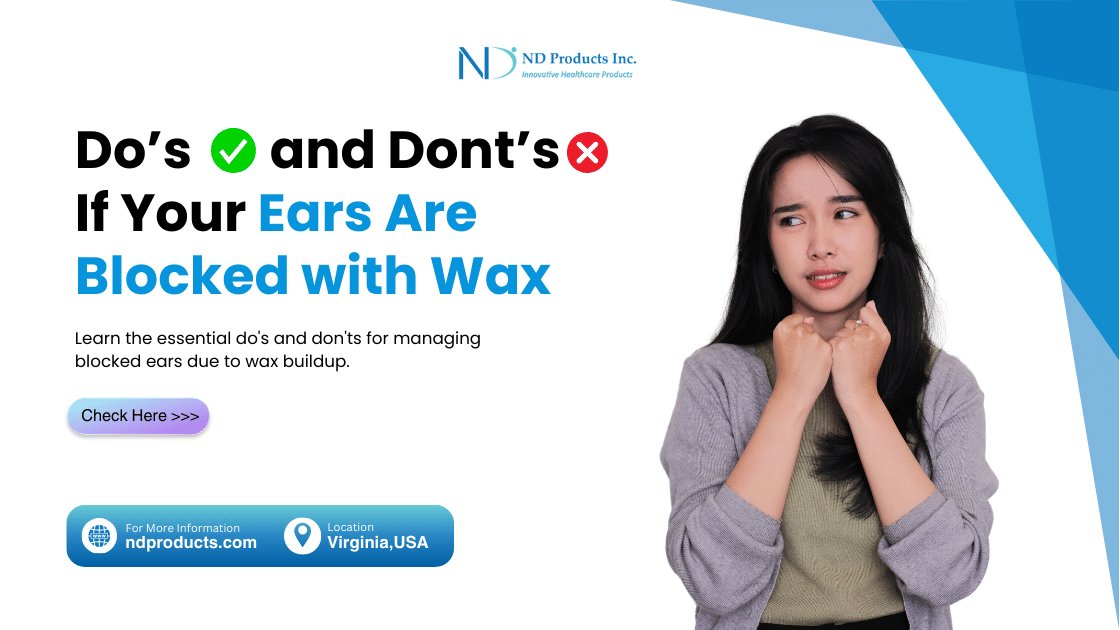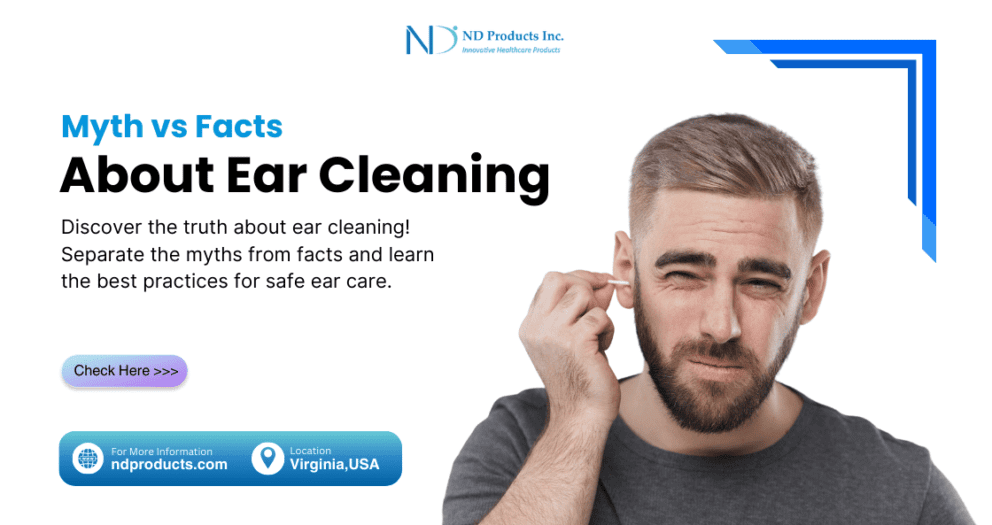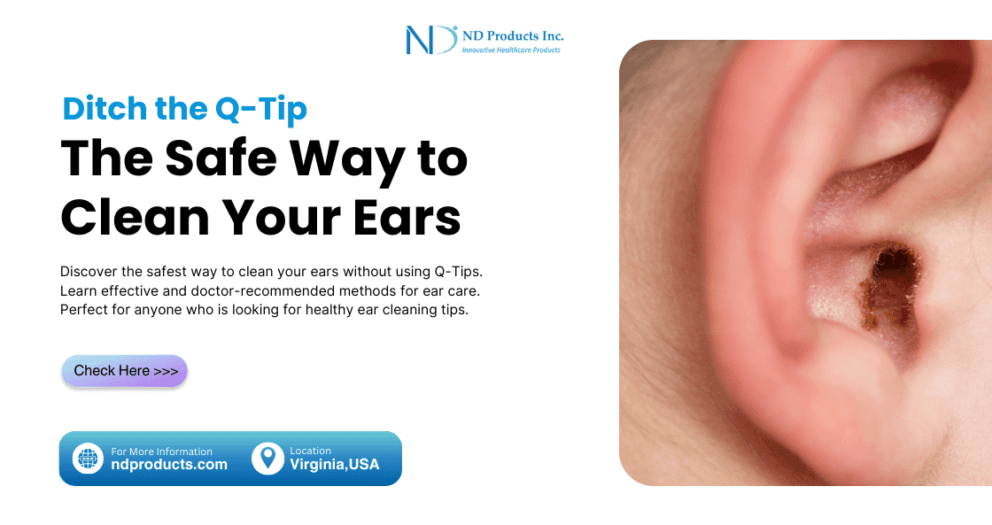Wax buildup can cause blocked ears, which can be frustrating and uncomfortable. However, you can handle this frequent problem well if you use the appropriate approach. We’ll go over the key dos and don’ts in this blog post for treating wax buildup-related blocked ears.
This article will discuss what to do and what not to do if you have a wax buildup in your ears. You will also discover how your healthcare practitioner can assist and why you probably won’t be able to treat an ear wax blockage on your own.
Understanding Ear Wax
Let’s define ear wax before proceeding on to the dos and don’ts. The glands in the ear canal naturally create ear wax, sometimes referred to as cerumen. Its main purpose is to keep dust, dirt, and other foreign objects out of the ear canal.
Massage Your Ears
You may wish to massage your ears or the area behind them gently if wax has made them feel excessively thick. While there isn’t any formal guidance or research on the subject, rubbing your ears may provide some temporary relief while you wait for medical assistance.
To help remove or loosen ear wax by massaging, you can try the following steps:
- Place your index and middle fingers behind your earlobe.
- Gently press and move your fingers in slow circles.
- Tilt your head to one side to help the wax drain out.
The Do’s:
- Use Ear Drops: You can make ear wax simpler to remove by softening it with over-the-counter ear drops.
- Seek Professional Assistance: Consult a healthcare provider if you’re having chronic obstruction or extreme discomfort.
- Maintain Proper Ear Hygiene: Use a moist cloth to clean the outer ear on a regular basis; do not place cotton swabs or other things within the ear canal.
- Try These Natural Remedies at Home: You can release ear wax by using natural remedies like hydrogen peroxide drops or warm olive oil.
The Don’ts:
- Avoid Cotton Swabs: Inserting cotton swabs or other objects into the ear canal can push wax deeper and potentially cause damage.
- Don’t Overuse Ear Drops: While ear drops can be helpful, overusing them can lead to irritation or infection.
- Avoid Ear Candling: Ear candling is a dangerous practice that involves inserting a hollow candle into the ear canal. It has no proven benefits and can cause serious injury.
- Don’t Ignore Symptoms: If you experience pain, hearing loss, or other concerning symptoms, don’t ignore them. Seek medical attention promptly.
- Avoid DIY Removal Methods: DIY ear wax removal methods, such as using bobby pins or hairpins, can be dangerous and should be avoided.
Scooping Out Wax
A medical professional might choose to use an Ear-o-care instrument to get rid of the wax. A pen-shaped spiral ear cleaning tool and kit with ten replaceable tips and a comfortable handle is what an Ear-o-care looks like. You can remove extra ear wax with the use of the ear wax cleaner tool. This method is typically quite comfortable and successful.
When Should You Visit a Doctor?
If you frequently experience ear wax blockages, you should consult a medical professional to have them safely removed and discuss possible preventative measures.
Seek immediate medical attention if you have these symptoms:
- You have pus-filled or bloody discharge from the ear.
- You observe clear discharge from the ear after a head injury.
- You suspect a perforated eardrum.
- Your hearing is reduced or completely lost.
- There is swelling and redness behind the ear.
- You or your child has a fever exceeding 104°F.
Preventing Ear Wax Buildup:
While occasional ear wax buildup is normal, there are steps you can take to prevent it from becoming a chronic issue. These include:
- Avoid Using Q-Tips: As mentioned earlier, avoid inserting cotton swabs or other objects into the ear canal.
- Use Earplugs: When swimming or showering, use earplugs to prevent water from entering the ear canal and causing wax buildup.
- Limit Earwax Softeners: If you frequently experience ear wax buildup, consider using earwax softening drops once a month to prevent excessive accumulation.
- Regular Checkups: Schedule regular checkups with your healthcare provider to monitor your ear health and address any concerns promptly.
Prevention:
Ear wax, also known as cerumen, is a natural substance produced by glands in the ear canal. While ear wax serves a protective function, excessive buildup can lead to discomfort and hearing problems. Here are some simple tips to prevent ear wax buildup and promote ear health
Over-the-counter ear drops can help soften and loosen ear wax, making it easier to remove.Ear candling is a dangerous practice that involves inserting a hollow candle into the ear canal and lighting it on fire. Not only is there no evidence to support its effectiveness, but ear candling can also cause serious injury or damage to the ear.
Drinking plenty of water helps keep the mucous membranes in the ear canal moist and prevents dryness, which can contribute to wax buildup.
By following these simple tips for ear wax prevention, you can maintain healthy ears and reduce the risk of wax buildup and associated complications. Remember to practice good ear hygiene, avoid inserting objects into the ear canal, and seek professional help if you experience any ear-related symptoms. With proper care and attention, you can enjoy clear hearing and optimal ear health for years to come.
Conclusion
Blocked ears due to wax buildup can be uncomfortable, but with the right approach, you can effectively manage this common issue. By following the essential do’s and don’ts outlined in this blog post, you can safely and effectively address blocked ears caused by wax accumulation. Remember to seek professional help if home remedies aren’t effective or if you experience severe symptoms. With proper care and attention, you can maintain healthy ears and prevent future wax buildup.





